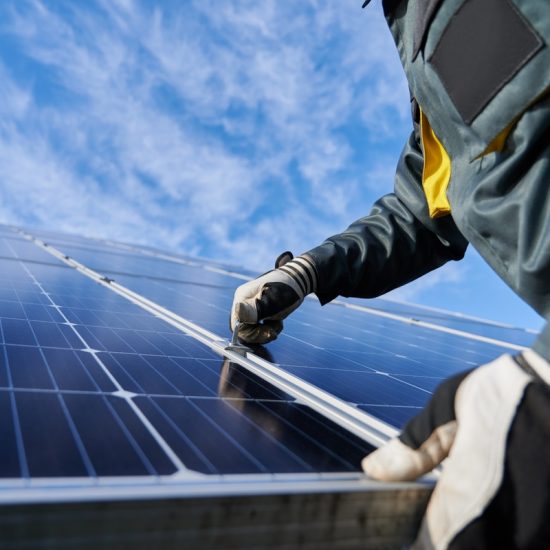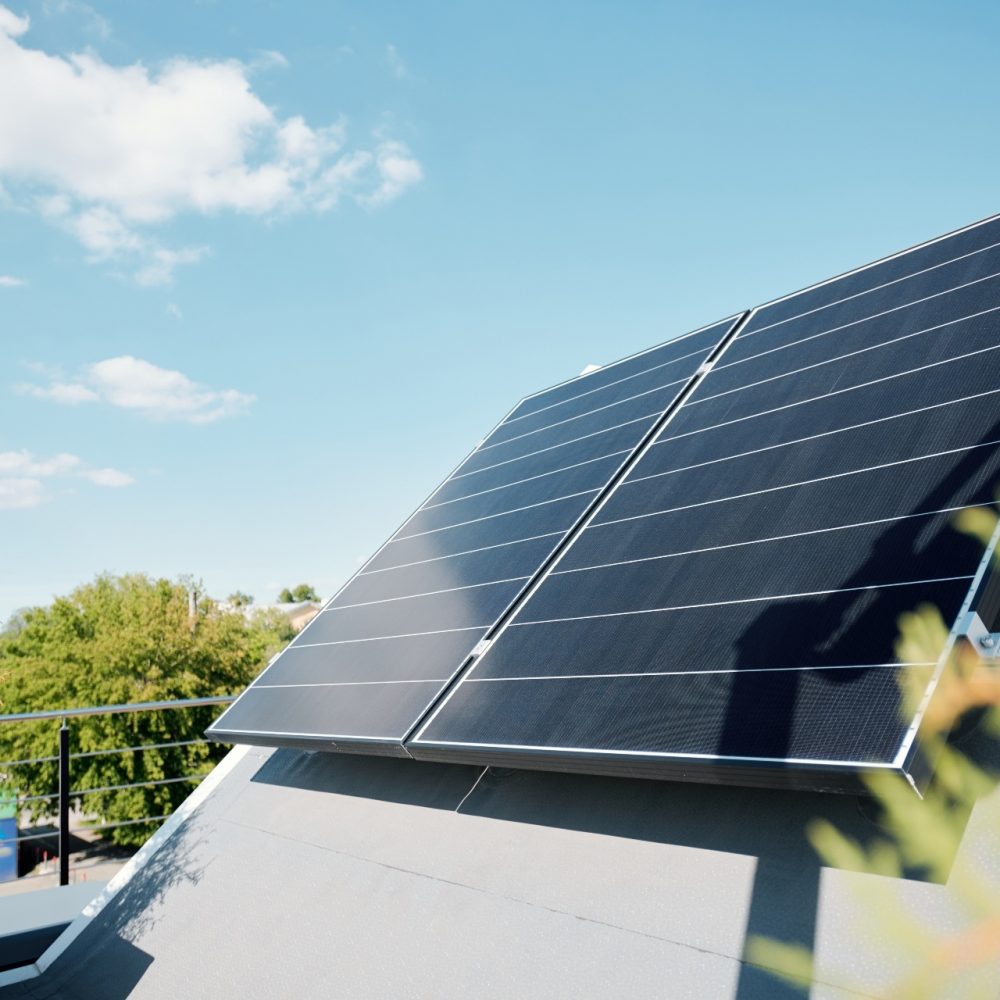How do solar panels work?
A solar PV panel consists of many cells made from layers of semi-conducting material, most commonly silicon. When light shines on this material, a flow of electricity is created.
The cells don’t need direct sunlight to work and can even work on cloudy days. However, the stronger the sunshine, the more electricity generated.
Solar PV systems are made up of several panels, with each panel generating around 355W of energy in strong sunlight. Typical systems contain around 10 panels and generate direct current (DC) electricity. Because the electricity used for household appliances is alternating current (AC), an inverter is installed along with the system to convert DC electricity to AC. This electricity can be used throughout your home, or exported to the grid.


Getting the most out of your solar PV system
During daylight hours, you’ll be generating electricity even on cloudy days, but if you’re using more power around your home than your panels are generating, or during the evening when your panels are not generating any electricity, you’ll be supplementing this by importing electricity from the grid.
As your solar PV system will be working at its peak during daylight hours, it’s a good idea to run your electrical appliances such as your washing machine, dishwasher, and iron during the day. If you’re at home, then this may be easier to do, but if you are away during the day, you could try setting timers for your dishwasher and washing machine.
Find a renewable expert
for your next project
in your job come to you.
Frequently Asked Questions
Solar PV
PV stands for Photo (light) Voltaic (Electric). Solar PV panels convert light in to electricity. Note the word light, not sunlight. They continue to produce electricity on cloudy days. It’s just that their output will be higher, the brighter the light is. This is not new technology – the use of light to produce electricity dates back to the 19th Century.
Inverters change the DC current from the panels to AC current needed for your home and the grid. It’s essential the correct type of inverter is used and that they’re located in the right place. Many installers always put them in the loft, but this can be detrimental to your system.
Your inverter monitors grid voltage and ensures that it is putting the power from your inverter into your system at a slightly higher voltage than the grid. Voltage is best thought of as pressure, the force behind the electric. If the inverter produces a higher voltage when you switch an electrical appliance on it will naturally use the power from the panels first.
You will simply draw from the grid in the normal way. But remember, it doesn’t have to be sunny to generate electricity.
The excess energy will be sold back to the grid.
On homes, for standard installations, the brackets used fix to the rafters of your roof which ensures the fabric is free from loadings. However, new developments in solar technology now mean you can build your roof entirely out of solar material or solar tiles that look like part of your roof.
Commercial roofs vary in construction and there are many different mounting solutions for every different scenario.
You’ll see savings on bills immediately. Payback of the installation cost depends on many variables including quality of panels and inverters, your local weather conditions, shading, pitch and orientation of your situation. Typically in Cornwall you can expect to pay off a home system in 8-12 years and a commercial system in 6-8 years. After that, it’s like getting free energy for the lifetime of the system (25-50 years with quality panels).
Many customers also install heat pumps. These take the small amount of heat in the air or ground and extract it to help heat homes and provide hot water. They run on electric and save huge amounts on people’s bills. Many customers also have wood burners, sometimes with back boilers. These combined with an immersion diverter can greatly reduce or even eliminate the use of Gas or Oil for heating and hot water.
No, Solar PV panels work on light and all roofs have light shining on them. Many customers have fitted east/west facing systems and typically generate around 86% of an equivalent south-facing roof.
Solar PV panels gradually degrade over time. Typically they will lose around 15% of their power over 25 years with some high quality panels only degrading around 2.5% over 25 years. This also varies depending on the quality of the panel. Naked Solar use PV Sol software which allows us to forecast very accurately the impact of any degradation
What our clients say is important to us
Lydia Short
Vincent Smith
Thomas Campbell
Find a renewable expert
for your next project
in your job come to you.

